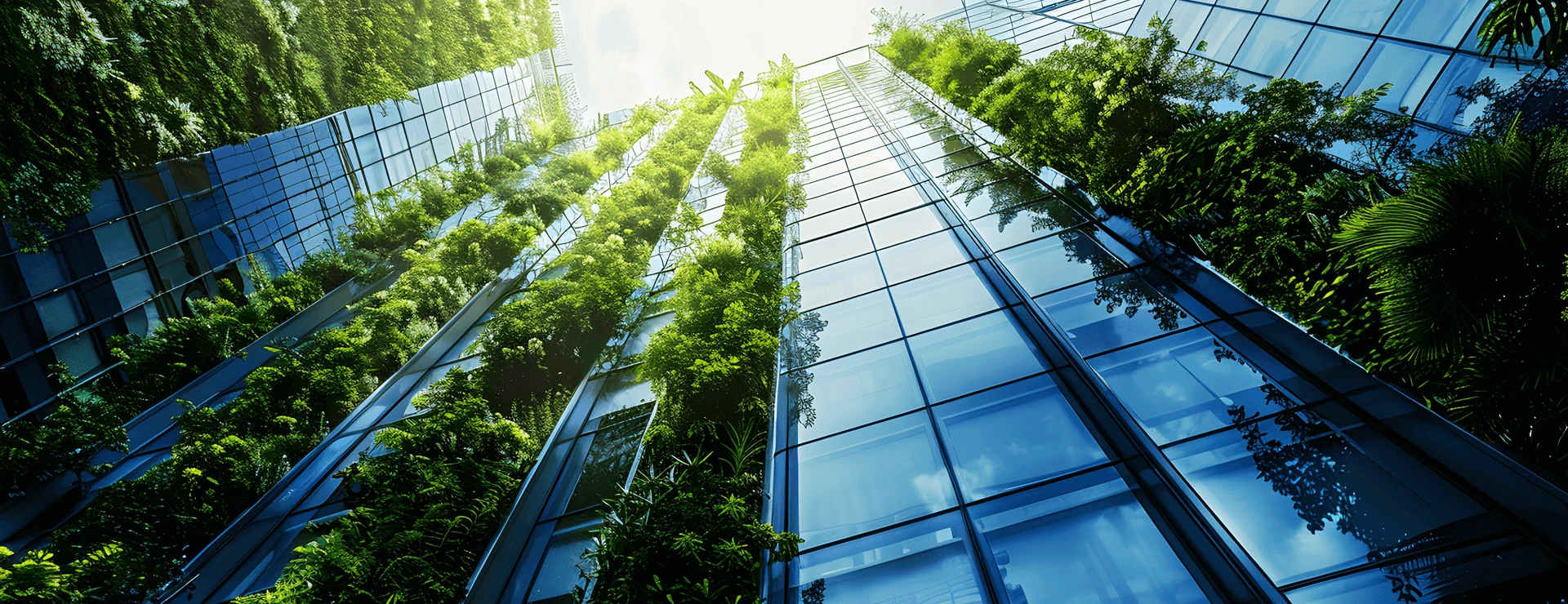

First up, we invite you to London for an up-close look at an extraordinary office building. In the Bankside district, just 200 metres from the River Thames, you find The Forge with zero carbon emissions – not only during its operation, but also during the construction phase. How was this possible? Ready-made kits of parts were used, increasing the efficiency, quality and speed of construction. This is thanks to the sustainable approach of Platform Design for Manufacture and Assembly (P-DfMA for short). The Forge is also the first office building constructed according to the UK Green Building Council’s zero-emission building guidelines.
Throughout the construction process, extensive use was made of information technology, including Building Information Modelling (BIM), allowing the cooperation between the design and construction teams to be extremely efficient. As a result, material consumption was significantly reduced, waste was reduced to a minimum, and all of this made a major contribution to reducing CO2 emissions. ‘The lessons learnt will serve as a benchmark for future construction projects, both in terms of efficiency and sustainability, inspiring us to continue to push the boundaries of what is possible in the construction industry’, said Angela Branch, project director from the company Sir Robert McAlpine.
The construction of this unique office building used the MB-SE 120 SUM object-oriented elemental façade system with a basic column width of 120 mm. It met the stringent requirements set out in the building specification, as evidenced by the positive results of tests carried out at the Research and Innovation Centre in Ogrodzona. Prefabrication of ready-made kits of components was carried out entirely at Aluprof’s plant in Goleszów. The largest of them had dimensions of 3 x 4.76 m, and there were almost a thousand of them in total! The MB-SE 120 SUM façade was designed specifically for The Forge and has been successfully implementing the ideas of sustainable construction in office buildings in London since 2023.
Environmentally exceptional office buildings are not just the domain of Western European countries, so let us now travel from the UK to Poland. In Cracow, at 29 Listopada Ave., you can see the V.Offices building, which holds the title of the office building with the highest BREEAM score in Poland. It was rated Outstanding, with a score as high as 98.87 per cent. At the time of receiving this prestigious document, it was also the second best result in the world. The BREEAM certificate is a confirmation of meeting sustainable construction standards at all stages of a building’s life. The assessment of a building takes into account, for example, the quality of the internal environment, the management of the building’s operation, energy efficiency and the building materials used.
Speaking of building materials, it is worth focusing on the Aluprof systems used in this unique building. In the case of façades, the tried-and-tested MB-SR50N and MB-SR50N EFEKT MB systems were used, as is often the case with BREEAM-certified projects (they have been used in such projects as: Podium Park in Cracow, the Engineering and Science Library at the University of Nottingham, Erskine House in Belfast and Chmielna 89 in Warsaw). ‘The designed façade was given a light colour to prevent excessive heating from the sun’s rays. The ventilated elements of the façade received beautiful perforation embellishments. However, what for most is only a visual element, for us was the object of an analysis of the potential of the building’s natural ventilation, where, through simulation modelling, we checked what amount of air enters the building in this way under the natural ventilation option. Aluprof’s systems thus fit perfectly into the design philosophy of the V.Offices building, in order to achieve an above-average effect of sustainable construction through an integrated partnership of various industries’, Dominik Włodarczyk of the certification company SWECO Polska said about this project.
Green buildings are not only advanced façades, but also modern windows. The V.Offices uses the MB-86 SI window and door system with a high thermal barrier. It is appreciated wherever a high level of energy efficiency is expected. Large aluminium windows are the domain of modern architecture, so it should also come as no surprise that the solutions used in the Cracow building include the MB-77HS HI high-insulation lift-and-slide system. It not only meets the requirements for energy efficiency and environmental protection, but also exceeds the regulations and standards in force.
Certified office buildings are taking the real estate market by storm. This should come as no surprise – after all, we no longer pay close attention only to spending our free time in a healthy and sustainable environment, but also to staying in a healthy environment while working. This is why more and more people all over the world can enjoy the view through Aluprof aluminium windows and façades while working at the office.
Modern construction is increasingly guided by the principles of sustainable development. Investors, architects, and developers are turning to solutions that not only improve user comfort but also minimise the environmental impact of buildings. In this context, international green...
With global climate change, reducing the carbon footprint is becoming one of the most pressing challenges for the construction industry. From material production to use and recycling, every stage of a building’s life cycle has an impact on the environment. This is why we need sol...
Sustainable design is a topic that is being discussed more and more often, with a focus on energy saving and environmental awareness. Nevertheless, investors remain skeptical because of the numerous myths surrounding sustainable construction. Let’s explode the five most common mi...